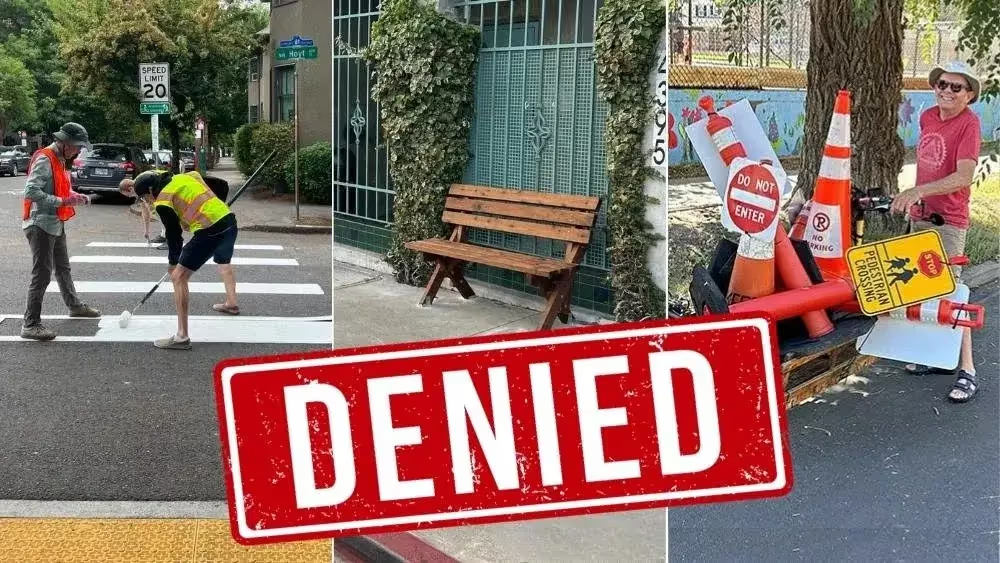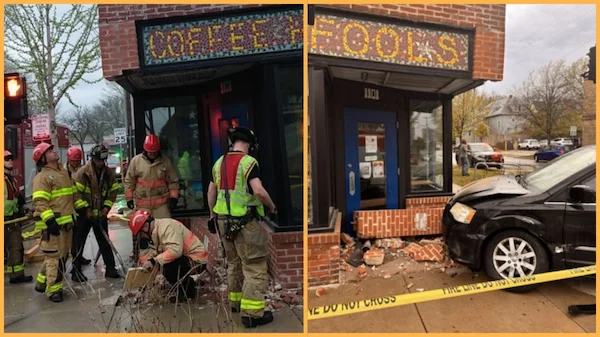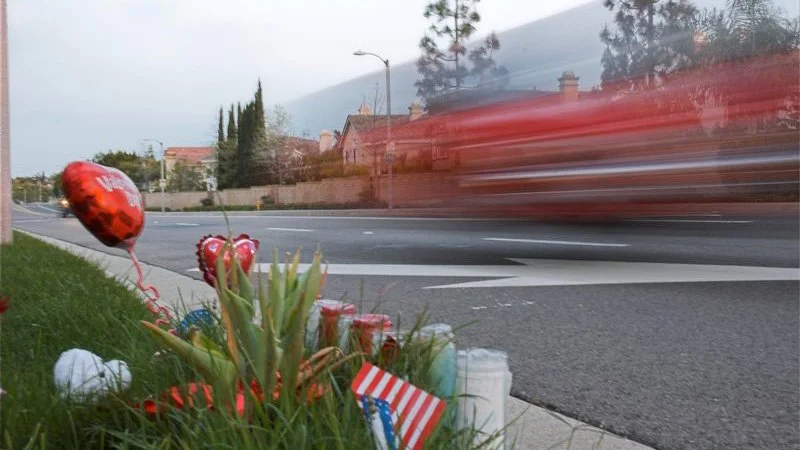Editor's Note: The challenges our cities face are growing, but so is the strength of this movement. Every story we share, every idea we spread, and every tool we build exists because people like you are committed to showing up. Your membership isn’t passive—it’s the momentum that makes change possible.
Certainly, you've heard a version of this story.
A fresh crosswalk is painted across a dangerous street. Not by the city, but by a resident. Someone who got tired of waiting. Someone who couldn’t stand the idea of another injury — or another obituary — before something changed.
Or maybe it’s the benches installed at a bus stop where people regularly wait, in the sun or rain, with nowhere to sit. A modest attempt by volunteers to provide a little dignity to someone overlooked by the system.
In more cases than not, the city responds swiftly. And not with gratitude.
A crew is dispatched to scrub the paint off the asphalt. The benches are removed and sent to a landfill. A press release is issued about unauthorized activity. Sometimes, criminal charges follow.
To many observers, this response by local government feels like an injustice: a city that couldn’t — or wouldn’t — act to address a simple human need suddenly finds the capacity to mobilize scarce resources to stamp out citizen initiative.
It looks petty. Spiteful. Small.
But here’s the thing: I don’t believe that’s the kind of response most public officials signed up for. Nobody runs for office or takes a job in local government dreaming of the day they’ll prosecute a neighbor with a paint roller. And yet, this is where the system often leads: into a defensive posture, where the priority becomes preserving control instead of building trust.
The heart of these stories isn’t about the legality of unsanctioned action. It’s the disconnect between public institutions and the people they serve.
So here’s the question city officials need to wrestle with: Is this the kind of relationship we want with the people who live here?
Why Cities Respond This Way
If you work inside city government, these kinds of interventions — unsanctioned crosswalks, handmade benches, painted curb extensions — can feel like a challenge.
They bypass the process. They create uncertainty. They open the city up to liability, or so the legal department says. And if one person gets away with it, what’s to stop everyone else?
In that context, the instinct to respond quickly makes a certain kind of sense. You’re not just reacting to the paint or the bench. You’re protecting the boundaries of an institution that’s supposed to ensure fairness, safety, and order. You’re following the rules.
But here’s the problem: To the people outside that institution, those same rules often look like excuses. And when residents step up to fix something that’s clearly broken — when they act not out of defiance, but out of care — and the city’s response is to erase or punish that effort, it sends a message you probably don’t intend:
We have more passion for defending our authority than meeting your needs.
That’s a hard message to recover from.
The more consistently it's sent, the more trust erodes. Residents stop believing that the city will act. They stop reporting issues. They stop showing up. And in the long run, that doesn’t lead to more control. It leads to paralysis.
The Common Justifications Don’t Hold
When cities respond swiftly to remove a DIY crosswalk or trash a handmade bench, the reasons tend to fall into familiar categories: liability, process, precedent, safety.
Liability is usually the first thing out of anyone’s mouth, and it’s the most emotionally loaded. ”What if someone trips over that bench? What if someone is hit while using that crosswalk? Then we’ll really be liable.”
But liability doesn’t suddenly appear the moment a resident takes action. In fact, in most cases, the greater legal risk comes from known hazards left unaddressed. If someone is injured trying to cross a street the city has long ignored — even after residents raised the alarm — that’s far more likely to create exposure than rogue chalk lines on pavement.
Cities are granted broad liability protections not to stifle innovation, but to enable it, especially when public well-being is on the line.
Process is the next most common defense. And it’s true: Local governments operate within complex frameworks. Stakeholder engagement, procurement rules, ADA compliance, environmental review, and more exist for good reasons. They aim to ensure fairness, transparency, and long-term accountability.
But we can’t lose sight of the fact that these are means, not ends.
When process becomes a shield for inaction — or worse, a bludgeon used against people acting in good faith — it loses its moral force. People aren’t asking for perfection. They’re asking for a crosswalk. A bench. A place to exist without fear or discomfort. If your process can’t deliver that, the process needs to change. It shouldn't be the public who pays the price.
Then there’s the precedent argument: “If we allow this, everyone will do it.” Maybe. But most people don’t want to spend their weekend painting traffic stripes or assembling bus stop furniture. They’re doing it because no one else will.
The more pressing precedent is this: What message are you sending when you penalize residents for caring? When you erase evidence of public need rather than address it? That’s the precedent that erodes trust, which is far more problematic than any unsanctioned act of civic repair.
And finally, there’s the argument of safety or code compliance. That these interventions don’t meet standards. That they might give someone a false sense of security.
But when someone installs a crosswalk near a park or a school, the real concern usually isn’t confusion. It’s misalignment. The citizen and the city are showing sensitivity to different things. They don’t prioritize the same things or share the same sense of urgency.
And that’s the deeper risk: not that a painted line might confuse a driver, but that the public might stop believing their government is capable of — or even interested in — making things better.
A Better Model: Partnership Over Policing
There’s a better way than scrubbing paint and issuing citations. Cities can choose partnership over policing. And some already have.
In Pittsburgh, the Department of Mobility and Infrastructure (DOMI) has launched a Neighborhood Traffic Calming Program that flips the usual script. Instead of waiting years for studies to confirm what residents already know, the city invites the public to nominate streets for interventions. And then the city acts.
Raised crosswalks. Pedestrian islands. Lane narrowing. Chicanes. Speed cushions. Each site gets a treatment tailored to its needs. The goal is simple and powerful: slow drivers down on neighborhood streets. And it’s working.
On Seagirt Street, speed humps dropped average speeds from 36 to 23 miles per hour, right next to an early childhood center and playground. On Termon Avenue, new chicanes dropped speeds from 37 to 27, bringing traffic in line with the posted limit.
As DOMI planning manager Panini Chowdhury put it, “We didn’t have to wait for federal money. We just listened to the residents and made some changes to help.”
That’s the principle: not waiting, not deferring, not demanding perfection. Just listening, responding, and making visible change that people can feel.
In Richmond, California, the city took a big step in May when it voted unanimously to legalize something that had been happening unofficially for years: residents building benches at bus stops that lacked them.
This wasn’t a theoretical policy. It was a direct response to real, on-the-ground action by the SFBA Bench Collective, a volunteer-led initiative founded by Darrell Owens and Mingwei Samuel. Frustrated by the chronic lack of seating along high-ridership corridors, the group built and installed more than 75 benches across the East Bay. Every bench was ADA-compliant. Each one followed AC Transit guidelines. And each cost just $70 in materials.
These weren’t stunts. They were acts of care, modest but meaningful responses to public neglect.
As Carter Lavin of the Transbay Coalition put it: “If community-led bench efforts like SFBA Bench Collective can install dozens of benches while operating in this quasi-legal space, imagine how much they can do if it were fully legalized?”
Richmond responded the right way: not with enforcement, but with encouragement. A new permitting process now allows residents to keep doing what they were already doing well, now legally.
In Shreveport, Louisiana, a small group of residents began cleaning up Highland Park using logs, yard debris, and donated materials to fight erosion and restore green space. What started as a simple act of stewardship grew into a partnership with neighbors, nonprofits, and city staff.
Rather than push them away, the city’s Parks and Recreation department welcomed the effort. They supported additional volunteer workdays, helped coordinate resources, and opened up conversations about how to use over $100,000 in bond funds that had been sitting unused for the park. To make sure the improvements reflected what neighbors actually wanted, the Re-Form Shreveport team went door-to-door, reaching people who would never have shown up to a public meeting.
It wasn’t polished. It wasn’t perfect. But it was real. And it worked.
None of these are stories of protest. They’re stories of public spirit. What made the difference is how their local governments chose to respond.
An Invitation to Lead
City officials don’t have to be the enemy of urgency.
You can be the ally. The champion of low-cost, high-trust solutions. The one who says yes to care, to community, to the kind of civic energy that doesn’t show up in procurement manuals but is nonetheless essential for building real momentum for change.
But that shift requires something difficult: giving up a little control in exchange for a lot of trust. It means seeing people not as threats to authority, but as partners in solving problems you’ve long known are too big to tackle alone.
A city isn’t something residents pay taxes for and passively receive in return. A city is a co-creation, an ongoing act of shared responsibility. The strongest cities are the ones where the local government embraces that truth, not resists it.
So, here’s a final thought to sit with.
The next time someone paints a crosswalk in your city, don’t just ask, “Who did this?”
Ask, “What are they trying to tell me?”
That one shift could open the door to an entirely different kind of city. It’s an essential step to becoming a Strong Town.





